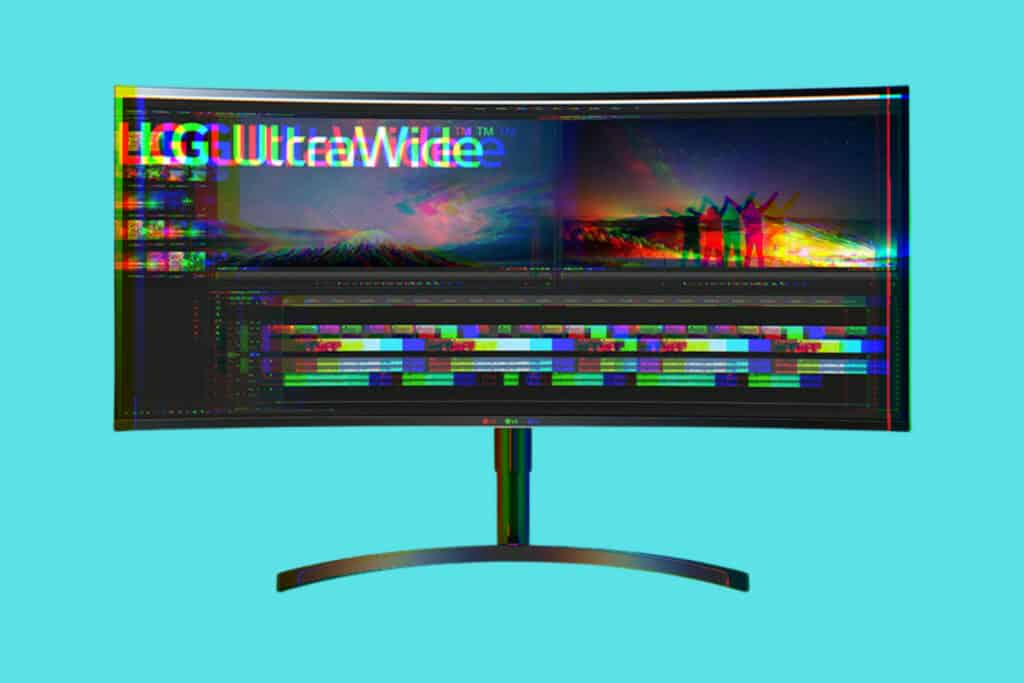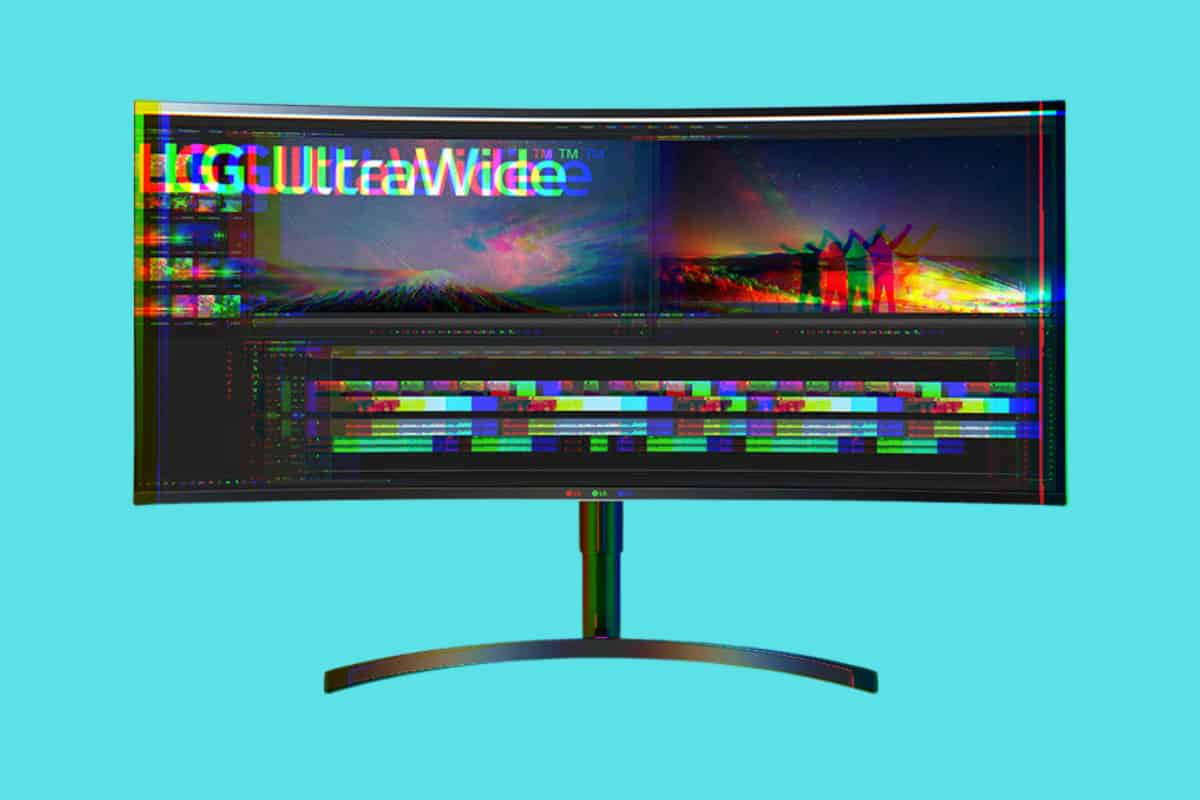More and more people are switching to an ultrawide monitor for their Mac setup. But what type of ultrawide monitor should you get for your Mac? Here’s literally everything you need to know…
Everyone has their own reasons for wanting more screen space, from an immersive media experience to a high-productivity screen setup.
If you are buying your first ultrawide monitor for your Mac, there are a few things you should know to make sure you choose the best screen for you. This guide covers every detail you’ll need to pick the perfect ultrawide monitor.
Why Buy an Ultrawide Monitor for Your Mac?
When you’re writing up an email or essay on your MacBook, you probably spend a lot of time jumping between tabs and programs. Wouldn’t it be nice to have all of that info visible at once?
When you’re watching a movie on your Mac, it would be pretty cool to have your own home theater setup at your desk, right? These are just a couple of examples of the many benefits of an ultrawide monitor.
Getting an external monitor for your Mac takes the power and performance of your Mac and gives it more screen space to work with. Ultrawide monitors are the biggest screens in the pack, offering you double or triple the screen space your MacBook comes with.
Likewise, if you are using a Mac Mini, swapping out a standard monitor for an ultrawide monitor can be a major upgrade.
Any Mac work setup can benefit from an ultrawide monitor, as well. This is especially true if you like to do things like edit videos on your Mac. An ultrawide screen will max out the space you have available for creative apps.
A large screen is perfect for a work-from-home or office setup, too. It’s more ergonomic than working on a laptop and it gives you space for all the documents, tabs, and apps you need for peak productivity.
What Makes a Display “Ultrawide”?
There are plenty of large monitors out there, but what exactly makes one an “ultrawide” monitor?
An ultrawide monitor by definition has at least a 21:9 aspect ratio. For those who haven’t heard of aspect ratio before, it refers to how long one edge of the screen is compared to another.
To put this in perspective, think about the difference between, say, an iPhone 7’s screen and an iPhone 14’s screen. The iPhone 14 has a greater aspect ratio because there’s a bigger difference between the long and short edges of its screen.
So, you could have two monitors that have a “30-inch” screen and one could be ultrawide while the other is not ultrawide. It’s all about aspect ratio. There are varying sizes of ultrawide screens, so some may be physically larger than others.
It is important to note that many ultrawide screens are curved, but not all of them. In general, curved ultrawide screens are more immersive, but some people prefer a traditional flat screen. Both curved and flat ultrawide monitors can work great with a Mac. This particular feature is all about what you personally prefer.
Monitor Compatibility With macOS
Possibly the most important factor to understand before buying an ultrawide monitor for Mac is compatibility.
Monitors are usually “plug-and-play” in that you simply plug them into your computer and they are ready to go. Macs only have certain ports built in, though, which can limit which monitors are compatible with your computer.
The easiest way to approach monitor compatibility with macOS is by looking for USB-C or Thunderbolt 4. MacBooks (2015 or later) and Mac Minis all have either USB-C or Thunderbolt ports. Thunderbolt ports are compatible with USB-C since Thunderbolt – or “USB 4.0” – is basically just a new version of USB-C.
The great thing about these ports is that they can transmit audio and video, meaning you should only need one USB-C cable to connect a monitor that has built-in speakers.
Not all monitors can be connected with USB-C, though. Most monitors do have an HDMI option, but you can only use that if you have a Mac Mini.
MacBooks do not have HDMI ports. Of course, there’s always the option of using an HDMI to USB-C adapter in a pinch, but this can be clunky and finicky in terms of performance.
For the best experience on your ultrawide display, go for a monitor that has built-in USB-C connectivity.
Monitor Technical Specs to Know
The most confusing part of shopping for a monitor is understanding the technical specifications of each monitor. If you’re unfamiliar with these terms, it can be really difficult to tell which monitors are better than others.

Screen Resolution
Out of all of the technical specs for your new monitor, the one you will want to pay the most attention to is screen resolution. This spec describes the number of pixels your screen has vertically and horizontally. Resolution is especially important when it comes to ultrawide monitors.
For example, there are some misconceptions about ultrawide monitors, including the myth that they can support 4K. Mainly due to the aspect ratio of ultrawide monitors, this is not true. 4K resolution is anything over 3840×2160 pixels, but most ultrawide displays only have 3440×1440 pixels.
Now, that’s not to say you can’t get 4K-level resolution on an ultrawide monitor. Some luxury ultrawide monitors have what’s known as 5K resolution, which is like 4K for ultrawide screens. These monitors have 5120×2160 pixels. You’ll get an incredibly sharp picture on your ultrawide monitor, but it won’t come cheap.
Refresh Rate
Refresh rate refers to the number of frames per second on your monitor display. A higher refresh rate essentially equates to “faster” movement on the screen without blur or losing frames.
Refresh rates are typically 60 Hz, 120 Hz, 144 Hz, or sometimes even over 200 Hz. On one end, your refresh rate is limited by your computer’s capabilities. Your Mac can only put out a certain peak refresh rate, regardless of the refresh rate of your monitor. This will usually limit you to a 60 Hz refresh rate, but that will be fine for most people.
For those who would like a higher refresh rate, it is possible. You’ll need a DisplayPort cable to get a refresh rate higher than 60 Hz. Macs do not have DisplayPort, so you’ll need to get a cable that has USB-C on one end and DisplayPort on the other. You’ll have to check the description of the cable before buying it, though, and confirm that it does support the refresh rate you’re looking for.
FreeSync and GSync
This monitor feature is mostly only relevant for gamers, but it can be a generally helpful feature. FreeSync automatically matches or “syncs” the refresh rate of your computer and your monitor. So, if your Mac and your monitor do not have the same refresh rate, the monitor will automatically sync to whatever your Mac’s refresh rate is. This ensures the image stays smooth and doesn’t “tear” while playing games or watching videos.
Pixel Density
Pixel density is a measure of how many pixels per inch, or “PPI,” are on your screen. As a general rule, a higher pixel density will result in a sharper image. It is possible that your MacBook will have a higher pixel density than your monitor. However, pixel density often isn’t all that noticeable unless you’re looking very closely at a screen or comparing two screens side by side.
If you’re planning to use your ultrawide monitor with your Mac for things like editing photos and videos, watching media, or playing games, a higher pixel density will be helpful. For most other applications, though, a high pixel density is nice but not usually necessary.
TN, IPS, and VA (Panel Type)
Every monitor has a specific panel type, which is the type of LCD screen technology used for the physical display itself. There are three main types: TN, IPS, and VA.
TN displays are usually the least expensive and tend to have the best value in terms of motion and refresh rate. In comparison, IPS and VA screens are usually more expensive but offer a sharper image. However, they can sometimes struggle to retain that sharp image while also achieving high refresh rates.
The right panel type for you will depend on what you plan to do on your monitor. If you enjoy gaming on your Mac, you will probably appreciate a TN display. Likewise, if you want to edit photos, a sharp IPS display will probably be best.
All three types of panels are fine for multipurpose use, so if you’re not sure which one to pick, just remember that TN will save you some money while IPS and VA will give you a sharper image.
What to Look for in an Ultrawide Monitor for Mac
So, with all of these tech specs and compatibility details in mind, what should you actually look for in a good ultrawide monitor? This depends largely on use and budget.
If you want to use your ultrawide monitor to play video games on your Mac, prioritize refresh rates. While most Macs can’t put out more than a 60 or 120 Hz refresh rate, try to get the highest refresh rate possible with your specific Mac model. A monitor with FreeSync is a great way to go.
If you want to use your ultrawide monitor for video, photo, or audio editing or watching movies, prioritize pixel density and panel type. If you can afford it, an IPS display will give you a clear, crisp image that will be perfect for capturing all the details in high-resolution pictures. High pixel density is always nice to have and will help out even if you can only get your hands on a TN-type panel.
For those planning to use their ultrawide monitor mainly for work, word processing, and productivity purposes, you will want to look for a good balance between all of the technical specs mentioned above.
For this category, you mainly want to start by focusing on the size of the display you want, whether that’s 30 inches, 50 inches, or any other specific size of an ultrawide display. An IPS or VA panel type will be nice to have, but if that’s outside your budget, look for a TN panel with a higher pixel density. FreeSync is a convenient feature, but you won’t necessarily need it.
Ultrawide Monitors for Mac
Ultrawide monitors can be a fantastic complement to a Mac Mini or MacBook. Not only do they give you maximum screen space, but they are also great for gaming, watching movies, editing, and general productivity.
While you’re searching for the best ultrawide monitor for your Mac setup, use this guide to make sure you choose one with the right specs for you. With the perfect ultrawide monitor, you’ll get the most value and performance out of your Mac device!
Check out our current top picks for the best ultrawide monitors for Mac – there’s an option for every budget too, from cheapish to ultra-premium and everything else in between.


